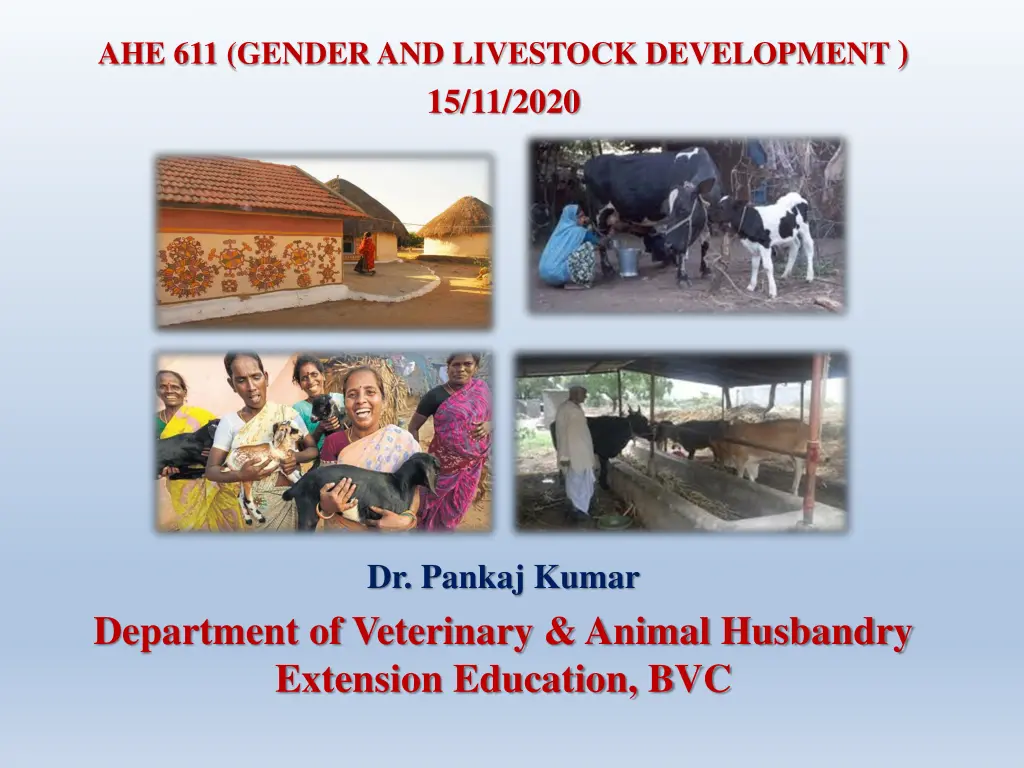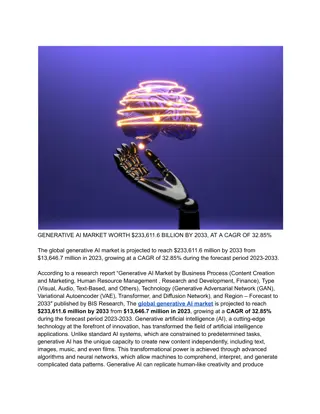
Gender Disparities in Livestock Development and Women's Status Worldwide
Explore the concerning statistics of women's involvement in agriculture and livestock, highlighting the significant gender disparities in income, property ownership, and representation in leadership roles globally and in India. Witness the substantial contributions of women to the workforce and food production, despite facing unequal pay and limited opportunities.
Download Presentation

Please find below an Image/Link to download the presentation.
The content on the website is provided AS IS for your information and personal use only. It may not be sold, licensed, or shared on other websites without obtaining consent from the author. If you encounter any issues during the download, it is possible that the publisher has removed the file from their server.
You are allowed to download the files provided on this website for personal or commercial use, subject to the condition that they are used lawfully. All files are the property of their respective owners.
The content on the website is provided AS IS for your information and personal use only. It may not be sold, licensed, or shared on other websites without obtaining consent from the author.
E N D
Presentation Transcript
AHE 611 (GENDER AND LIVESTOCK DEVELOPMENT ) 15/11/2020 Dr. Pankaj Kumar Department of Veterinary & Animal Husbandry Extension Education, BVC
Entereprise Integration: women in agriculture and livestock
Status of women worldwide Women and Poverty 70 % of the 1.2 billion people living in poverty are women Women as Workers Women do more than 67% of the hours of work done in the world Earn only 10% of the world s income And own only 1% of the world s property The value of unremunerated work was estimated at about $16 billion, from which $11 billion represents the invisible contribution of women 3
Cont Women are paid 30-40% less than men for comparable work on an average. 60-80% of the food in most developing countries is produced by women. Women hold between 10-20% managerial and administrative jobs. Women make up less than 5% of the world s heads of state. 4
S tatus of women in India Census 2001, women - 48.26 % of the total population of India. Among the total population literacy rate -54.16% Rural women literacy rate -31.6% Urban women literacy rate-54.01% Female share of non-agricultural wage employment is only 17% Participation of women in the workforce is only 13.9% in the urban sector and 7
Cont. Women s wage rates are, on an average only 75 % of men s wage rates constitute only 25% of the family income In no Indian State women and men earn equal wages in agriculture. Women occupy only 9% of parliamentary seats less than 4% seats in High Courts and Supreme Court less than 3% administrators and managers are women. 6
Distribution of women workers in India Year Total Female Population Million Cultivators(%) Agricultural Labourers (%) Industry and Service (%) 1951 173,543 45.3 31.3 23.3 1961 212,467 55.7 23.9 20.4 1971 263,900 29.6 50.5 19.90 1981 321.357 33.2 46.2 20.6 1991 402,813 34.5 43.6 21.9 2001 494 million 36.5 43.5 20.0 Source : Registrar General of India, New Delhi, 2001 7
Women Contribution and Status Women contribute to two-thirds of the world s work hours, produce 50 per cent of the world s food supplies Women work in fields, take care of families and manage household Despite the services rendered by women in the family and work place, they make up for nearly 70 per cent of the world s poor and more than 65 per cent of the illiterates
Share of Farm Women in Agricultural Operations Activity Involvement (percentage) Land preparation 32 Sowing and cleaning 80 Intercultural activities 86 84 Harvesting reaping, winnowing, drying, cleaning and storage 9
Time and Energy Distribution by Rural Women Duration Hours/day Energ y K.cal 903 283 Activities Percentage 7.55 7.00 40.5 39.69 Domestic activities Agriculture allied activities 6.50 2.15 23.20 283 155 2255 12.76 6.97 100.0 Sleep Rest andrecreation Total Joshi (1999) 10
Why women in agriculture? In order to eradicating poverty To ensure food security To increase their stake in agriculture To increase economic contribution Ownership in land , livestock, etc. 11
Importance of women in agriculture Woman is the moulder and builder of any nation s destiny. They play a significant role in any economy. They are regarded as the backbone of the rural scene. Most of the women perform various types of work for their livelihood and agriculture is considered as the biggest unorganized sector where large number of rural women take part actively. 12
Multi-Dimensional Role of Women (i) Agriculture :Sowing,transplanting,weeding,irrigation fertilizer application, plant protection, harvesting, winnowing, storing etc. (ii) Domestic: Cooking, child rearing, water collection, fuel wood gathering, household maintenance. (iii)Allied Activities: Cattle management, fodder collection milking etc. 13
Cont (iv)Horticulture: vegetable production, flower production, fruit production. (v)Sericulture: silk worm rearing, cocoon production. 14





















